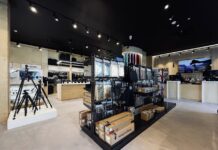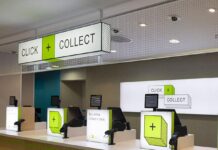As anybody who has worked within the retail industry over the past two years will know, consumers are now demanding the most innovative and personalized digital experiences each and every time they engage with brands online. And what’s more, they have zero tolerance for retailers who fall short of their expectations.
These increased consumer expectations for exceptional digital experiences are triggering a huge shift towards full-stack observability within the retail sector. More than their peers in any other sector, retail technologists are urgently looking for greater visibility into availability and performance across their IT estates, as a way to meet customer demands. They’re looking to build on their existing monitoring capabilities and bring in new solutions which will give them full visibility into legacy on-premise architecture alongside cloud native environments, including the increasing deployment of microservices and container solutions.

The latest report from AppDynamics, The Journey to Observability, reveals that 60% of retailers have now begun their transition to full-stack observability and a further 37% plan to do so in the next 12 months. That means that an incredible 97% of retail organizations will be somewhere along the journey to full-stack observability during 2022, more than in any other industry.
Evidently, retail technologists have recognized the need for a unified view on IT availability and performance as a way to manage growing complexity across an ever-more fragmented IT environment and to support new hybrid working patterns. Retailers know that they simply can’t afford any slip-ups when it comes to digital experience and they’re acutely aware of the potential consequences of any downtime or outages.
🏆
The 2024 Creative Retail Awards are open for entries.
The Creative Retail Awards are much more than a mere accolade; they represent the pinnacle of achievement in the retail industry. Garnering a nomination or winning one of these awards is a testament to innovation, excellence, and leadership.
www.creativeretailawards.com
Full-stack observability provides technologists with unified, real-time visibility into availability and performance up and down the IT stack for compute, storage, network and public internet, from the customer-facing application all the way into the back-end. It enables IT operations, development and networking teams to quickly and easily identify anomalies, understand dependencies and fix issues before they impact the end user, whether that be citizens or employees. And when this IT availability and performance data is connected to business outcomes, retail technologists can assess issues based on their potential impact to customers and the business, and prioritize their actions accordingly.
Rapid progress triggers early benefits for retailers
Encouragingly, the efforts that retailers made during 2021 are already starting to deliver positive results. As many as 89% of retail technologists report that their organizations have increased visibility across their IT stack over the past 12 months, once again more than within any other sector. And importantly, this improved visibility into IT availability and performance is leading to some significant benefits.
In particular, technologists point to enhanced productivity and reduced operational costs in the IT department as a result of teams being able to more quickly isolate and tackle performance issues within the IT stack. And IT departments have been able to better prioritize IT innovation based on what will have the biggest impact on customers and the business.
Retailers are also benefiting from closer collaboration between teams, who are increasingly able to coordinate their activity around a single source of data, rather than working in silos with their own disconnected monitoring tools.
But perhaps the most striking benefit of having improved visibility across their IT environment is the fact that retail technologists are starting to escape the constant firefighting that has plagued IT departments over the last two years, as they have navigated through the pandemic. Technologists are starting to find time to focus on more strategic work, rather than dealing with the constant pressures of identifying and fixing issues before they impact end users. This is, of course, a massive win for retailers who are desperate to get their most innovative minds focused on the critical digital transformation programs that can enhance customer experience and allow them to differentiate in a fiercely competitive and dynamic market.
Indeed, the research shows that business leaders within retail organizations have recognized the results that have been achieved to date and are now keen for technologists to accelerate their plans to deliver further business value. An incredible 98% of technologists report that business stakeholders are now supportive of their plans and making available the necessary budget and resources for them to press ahead in 2022.
Critical success factors for 2022
For all of the progress made during 2021, retail technologists acknowledge that there is still a lot of work to be done to realize their ultimate vision for full-stack observability. The transition to full-stack observability is a complex, multi-stage journey which takes time and sustained effort. As you would expect in such a nascent, emerging area of technology, most organizations remain at the earliest stages.
However, the research reveals a steely determination amongst retail technologists to overcome the challenges they face and to take full advantage of the momentum they have built up in the last year. They know that the next 12 months will be crucial in their transition to full-stack observability and are confident that they can achieve their goals in 2022.
One main reason for this feeling of optimism is that technologists have identified exactly what they need to focus on in order to achieve success. Skills are seen as the biggest priority, with technologists recognizing the need for specialist skills to monitor performance in the cloud, particularly with the ongoing shift to Open Telemetry – a specific observability framework for cloud-native software. In a highly competitive and finite talent pool, retailers will need to develop winning strategies to attract and develop the skills they need to manage and optimize availability and performance in microservices, container and serverless environments.
Technologists also cite the need to partner with the right technology vendor as critical in 2022. Retailers will be looking for vendors that can deliver a true end-to-end solution which includes application monitoring, security, workload optimization and financial cloud cost optimization. But beyond technical solutions, retail technologists will want a partner that can help them to navigate the journey to full-stack observability, and to drive through the cultural and operational changes that are required to maximize the benefits of full-stack observability.
Nearly all retailers now have a defined implementation strategy for full-stack observability in place but there is a widespread understanding that plans will need to be constantly reviewed and amended to reflect changing business requirements and to support new environments and tools across the tech stack.
Widespread excitement about transformational benefits of full-stack observability
After a challenging two years in retail IT departments, there is now a real sense of positivity and anticipation about the next 12 months. Retailers have had a small taste of what full-stack observability can deliver and they’re now hungry for more.
Indeed, the research finds that retail technologists are hugely excited about what they can deliver over the next 12 months, from both an IT and business perspective. In fact, 89% believe that full-stack observability will be transformational for their organization, more than in any other industry.
Technologists have every right to feel confident and optimistic about 2022. They’ve made fantastic progress over the last year and they’ve put themselves in a position where they’re now operating with a strong tide of support from the business. They know where they need to focus in order to achieve their goals and they’re absolutely determined to make it happen.
These are immensely exciting times for retail technologists who now have a unique opportunity to deliver game-changing impact for their organizations.













